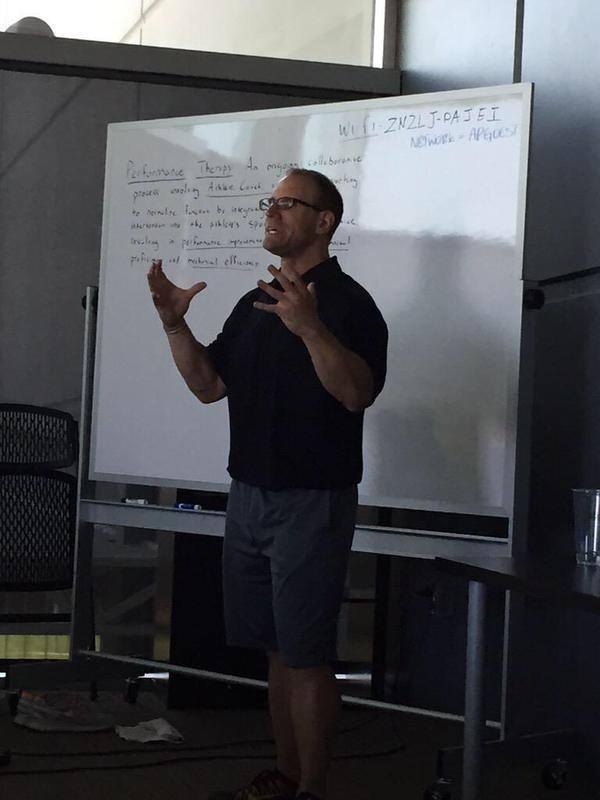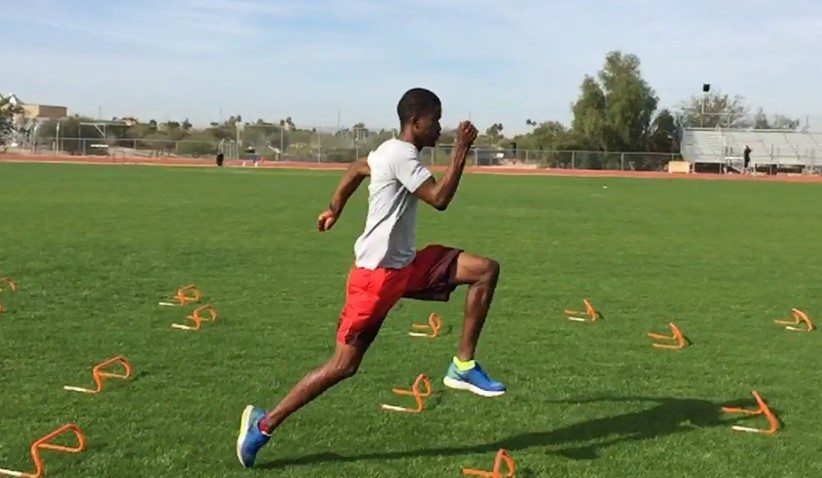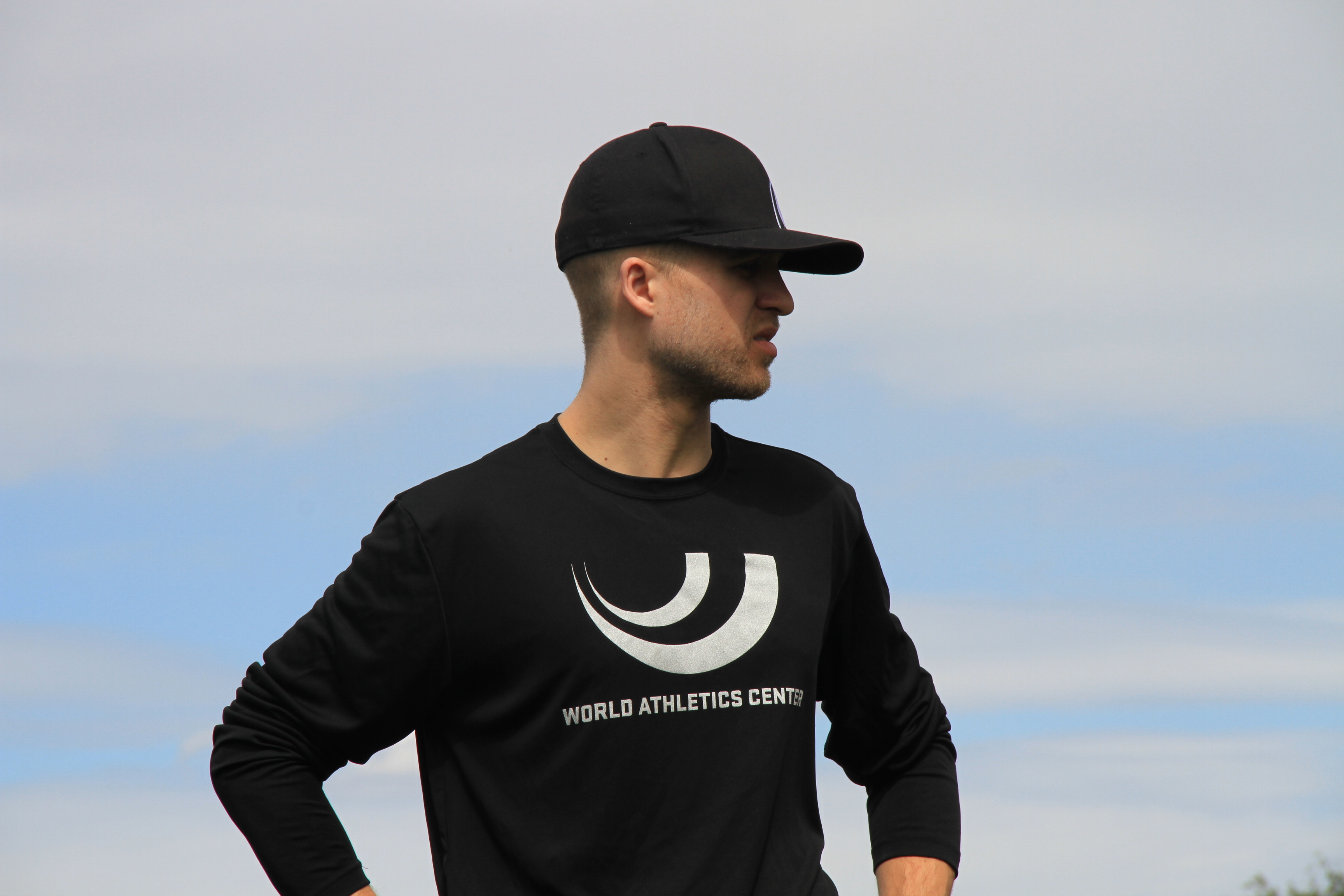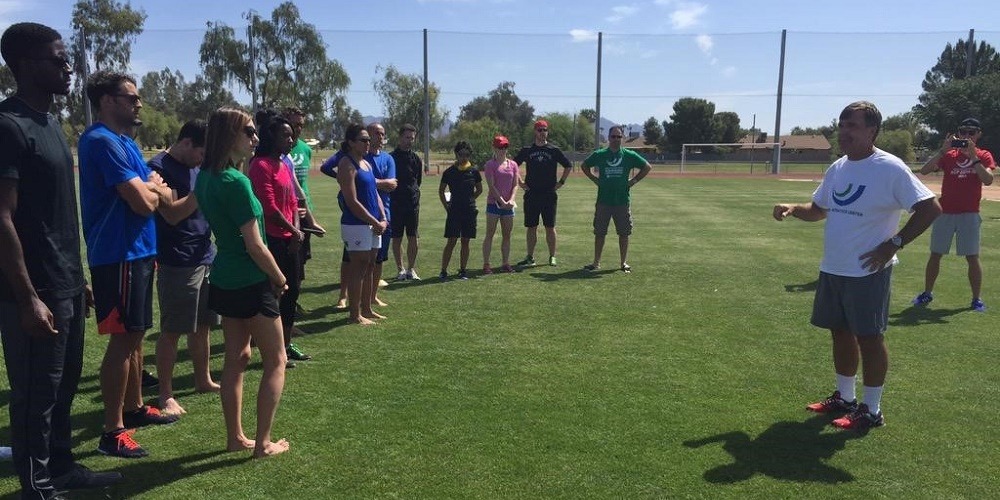Sunday marked the successful completion of the inaugural trilogy of the Athletigen Performance Therapy Program. In what was described by Altis Medical Director – Dr Gerry Ramogida – as a “nonstop education tsunami” the four day event involved a unique collaboration between coaches and therapists from around the world – intent on synergistic sharing and learning.
“Through Performance Therapy, we are working to change the paradigm of therapy from a reactive to proactive one: from a separated entity, to a model of collaborative effort between athlete, coach, and therapist. The outcome is reduced injury frequency, and optimization of performance” Dr Gerry Ramogida explained. With this overriding theme evident throughout every aspect of the course, guest therapists and coaches were also treated to a spectrum of lectures featuring Movement expert Shawn Myszka; Dr Jeremy Koenig from Athletigen, and Coach Dan Pfaff.
“The Athletigen PTP course reminds me why I love being part of the group at Altis” Dr Ramogida reflected – “where else would you get to enjoy working with a group of extremely committed coaches, athletes, and therapists working together in a collaborative, integrated, and innovative environment? Although I lecture each day, I too walk away feeling enlightened – and full of new learning experiences from this mixing of so many bright minds. The Athletigen PTP course is a must for all coaches and therapists.”
Still not convinced? This is what our participants had to say:
“I gained more information about therapy in four days from you than I have in the past four years.”
“You do a fantastic job presenting and making very complex material easy to understand … it was an unforgettable experience.”
Whilst there are still two remaining Gill ACP sessions running this summer, the Athletigen PTP will restart in the fall. In the mean-time, you can look back through this edition’s key messages in our highlights summary:
If mechanics aren’t sound, it doesn’t matter how good the rehab program is. @DrGerryRamogida
As running speeds change musculotendinous characteristics change, backed by research. @DrGerryRamogida
Research is catching up – findings show mechanics as a primary factor in sprint speed. @DrGerryRamogida
The point of performance therapy is integration between coach, athlete, therapist. @StuartMcMillan1
I need a coach, athlete, and therapist. With good communication we will be successful. @DrGerryRamogida

Dr Gerry Ramogida
One of the greatest elements of performance therapy is immediacy of improved movement. @DrGerryRamogida
How does the body manage massive amounts of force? Understand tensegrity model. @DrGerryRamogida
It’s important to be consistent and detailed when coaching athletes in ELDOA @DrGerryRamogida
Warm up is a visual movement screen for the coach + kinesthetic screen for the athlete. @PfaffSC
In order to observe movement well, you must have an appropriate + sophisticated mental model. @PfaffSC
Tone is a good thing- if you don’t have tone you are dead. Tension is bad. – Marcin
Improving physical preparedness is simple compared to mastering human movement in sport. @MovementMiyagi
We can never analyze movement too much, or too deeply. @MovementMiyagi
Man is his movement – everything in life affects movement. @MovementMiyagi
Movement change is ultimately behavioral change. @MovementMiyagi

Shawn Myszka
I don’t use FMS – my movement screen is game film – what happened when chaos ensued? @MovementMiyagi
Your body is the brush, the track is the canvas, and your movement is the art. @MovementMiyagi
What questions do you ask yourself while observing movement? @MovementMiyagi
There will be fluctuations in a given technical model – each athlete has a movement signature. @MovementMiyagi
The 3 Bs: 1. Brain 2. Behavior 3. Biomechanics. How do they all interact? @MovementMiyagi
The pool of movement our body can use far exceeds that which we can communicate or cue. @MovementMiyagi
Brain-body maps are built with repetition – for better or worse. @MovementMiyagi
Go to bed understanding and visualizing how you want to move the next day. @MovementMiyagi
The de-brief is the end of one session and the beginning of the next – never skip these. @MovementMiyagi

Shawn Myszka
Cues must be timed well, concise, and clear- direct athlete attention appropriately. @MovementMiyagi
Professionals will default to their training – how broad is your training and do you have perspective? @PfaffSC
Embracing a model where therapists spend time observing athletes in sporting movements is critical. @DrGerryRamogida
Who keeps athletes accountable for movement? Is it team philosophy to coach movement quality and effort? @PfaffSC
There is no “normal” movement per se – normal movement is efficient, effective, and safe. @MovementMiyagi
The organism/athlete will adapt to its environment – create an environment that promotes right adaptation. @JeffMorenoRUN
It’s not about ‘normal’ – it’s about optimal and authentic. @MovementMiyagi
If it helps us get better – we are going to do it. @DrGerryRamogida

Dan Pfaff
With Performance Therapy – the goal is to change as little as possible to affect the change you want. @DrGerryRamogida
Don’t juggle too many balls at once- keep variables to a minimum to monitor effect. @PfaffSC
What are the landmarks and incubation periods? Don’t get stuck in norm-based time-lines. @PfaffSC
Stay as close to the training program as possible at all times – even post-surgery. @PfaffSC
Best way to appropriate stress is to have athletes move in an efficient manner. @DrGerryRamogida
Healing is perpetuated by appropriate stress through the injury site. @DrGerryRamogida
Dysfunction in the foot is often the first cause of global movement dysfunction. @DrGerryRamogida
Aberrant mechanics of any kind increase the likelihood of injury @DrGerryRamogida
The importance of dorsiflexion cannot be stressed enough. @DrGerryRamogida

Dr Gerry Ramogida
We are looking for symmetry and rhythm from multiple perspectives. @DrGerryRamogida
Lateral walks provide coach w/context for pelvic function and balance. @DrGerryRamogida
Focus comes and goes between exercises or days. Remind athletes appropriately. @_trackside_
Flexion of the hip in butt kicks is indication of anterior tension. @DrGerryRamogida
Dribbles are often rehab check – 40m dribbles over knee excellent indicator of health. @DrGerryRamogida
I cue dorsiflexion in EVERY movement possible. @DrGerryRamogida
Manipulating postures in warm up addresses unique planes – individualize these to the athlete. @PfaffSC
Tension on anchor points in the hips and chin create release along post-chain fascia. @DrGerryRamogida
Brain maps and alarms often govern motor control. @PfaffSC
Acceleration is a complex skill, practice it often. @PfaffSC
Stationary vs starting on the move … Same model despite varying starting angles and velocities. @PfaffSC
Don’t get married to an idea … Stiffness has a partner called compliance. It’s a balance.
Dan Pfaff
Another concept we need to put to rest, the elbow at 90 degrees is a myth. @PfaffSC
The arms are counter-balancers – not drivers. @PfaffSC
Acceleration is a skill: needs to be trained constantly – do pro golfers go months without hitting a ball? @PfaffSC
While we’re at it … Let’s also end the toe drag myth. Friction in the negative direction isn’t helping. @PfaffSC
UNDERSTAND: Triple extension is a myth – there is a correct amount of extension for the task at hand. @PfaffSC
Know landmarks and review film in half speed, frame by frame, varied positions … aids in real time understanding. @PfaffSC
Find the common denominators of great athletes, avoid basing the model on the exceptions. @PfaffSC

Dan Pfaff
Programming in ranges can be highly beneficial towards the mindset of your athletes. @PfaffSC
At the end of every year we ask ourselves, “what can we do less?” @PfaffSC
Be a risk-taker – and sometimes that means doing less! @KyleHierholzer
Constant critical observation of movement is an active skill. @StuartMcMillan1
Stop dragging your foot to affect heel recovery … not consistent, not replicable, and not logical. @PfaffSC
We are good at stimulating & adapting – but can we stabilise & actualise? Coaches change inputs far too often. @PfaffSC
The greatest recovery modality is sleep, next is nutrition.
Stuart McMillan
At point of highest force production, joints need to be in neutral position. @DrGerryRamogida
Dorsiflexion occurs both open chain and closed chain – talus must move properly. @DrGerryRamogida
About 98% of biceps femoris injury correlates with cuboid dysfunction and fibulae up-slip. @PfaffSC
Adductor Magnus often referred to as the third hamstring – important role in sprinting. @DrGerryRamogida
Often times the healing process depends on athlete compliance – athlete must buy in. @PfaffSC
If tendons hate one thing more than anything- it’s SHEARING. Avoid at all cost. @DrGerryRamogida
In most cases, our athletes move into plan B training asap after injury. @PfaffSC
There are a myriad of variables that affect injury and recovery – never isolatory. @PfaffSC

Dr Gerry Ramogida
Rest is rest – and it’s just as important as an acceleration or jump. @DrGerryRamogida
Don’t be afraid to fail – it’s how we learn- we must take responsibility for our learning. @PfaffSC
We learn a great deal from reflections on failure – not to blame but to build context. @DrGerryRamogida
I see an epidemic of kyphosis in past 10 yrs among young athletes – computers, iPhones, etc. @PfaffSC
What is your intention when palpating tissue? Respect the body as a living thing. @DrGerryRamogida
In treatment you must be totally engaged and intentional – thoughts have impact. @DrGerryRamogida
As a young coach/therapist – know your boundaries and stay within them. @PfaffSC
Some muscle fibers exist within fascial chains- not running from tendon to tendon @DrGerryRamogida
Tissue separation as we see in text books does not exist in reality. @DrGerryRamogida
Injury is like a wheel: treat the spokes – not just the wheel. @DrGerryRamogida

Marcin Goszczynski

